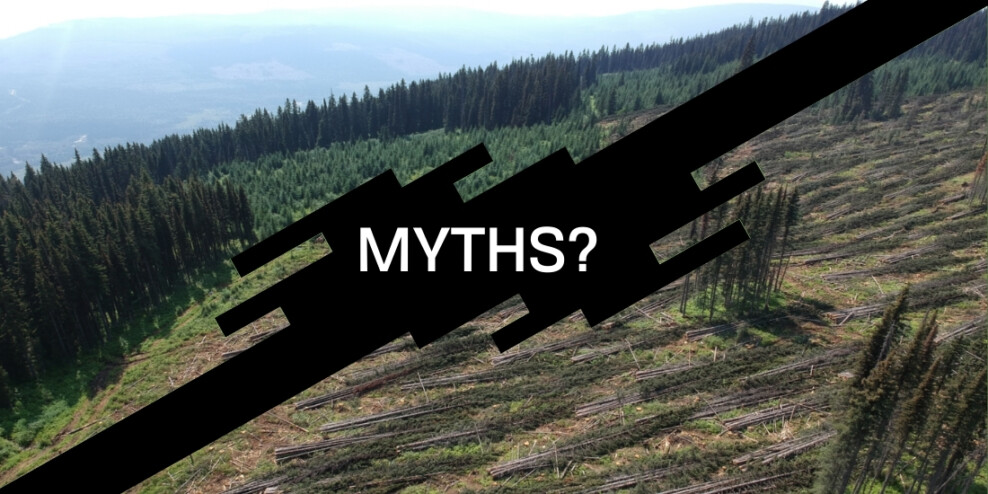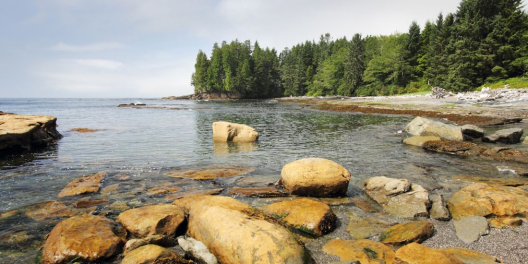Jim Pojar is the co-author of the go-to field guide for the plants and trees in BC.
If you’re a hiker or have friends who enjoy nature, you’ve probably seen many a well-thumbed copy of his bestselling book, Plants of the Pacific Northwest Coast: Washington, Oregon, British Columbia, and Alaska.
Back in 2019, Pojar wrote a report for the SkeenaWild Conservation Trust and the Skeena Watershed Conservation Coalition that dismantled some enduring myths about the benefits of Big Timber.
The well-respected BC ecologist and botanist explains why industrial forestry is terrible for the planet and local communities.
With the global climate meeting just days away in Glasgow, we thought it wise to take a closer look at some of the biggest myths logging companies will likely try to spread to avoid doing their fair share to address the climate emergency.
Myth # 1 – Forestry is carbon neutral
Pojar – It could be, but usually isn’t.
Logging mature and old natural forests result in an increased release of carbon for several years because
a) clearcutting usually leaves behind little in the way of carbon sinks (living trees and plants);
b) removal of trees and the associated carbon emissions of logging;
c) it producers more decomposition of woody debris and other organics.
Myth #2 Young forests are carbon sinks. Old forests are carbon sources that contribute to climate warming.
Pojar – An oversimplification and the second part is mostly false
In fact, old forests usually store much more carbon on-site than do young post-logging forests. Depending on how they naturally function and how they are logged, roaded, and managed, forests can lower or add to the heat-trapping pollution that causes climate change.
Myth #3 Mature and old forests are not permanent carbon sinks because the trees eventually die
Pojar – Death is inevitable, but in this case, beside the point
Left alone, forests grow. When individual trees die they, are replaced by younger trees. Regardless of whether BC forests are a net source or a sink at any given moment, they continue to store megatonnes of carbon as long as they still have trees on site—even if the trees are dead.
Myth #4 Trees will grow faster, and we’ll get more wood as the climate continues to become warmer and wetter
Pojar – That is unlikely to be true across much of BC.
Some trees and some forests will grow faster in BC’s north and at high elevations.
But most of BC’s intensively managed forests are less diverse and thus less resilient to climate change, pests and diseases.
Myth #5 Production forestry can help slow global warming
Pojar – This argument is flawed in several ways.
For example, logging results in significant loss of forested land to roads, landings and erosion. Logging, processing, trucking, and shipping also burn a lot of fossil fuel.
Myth #6 Intensive, short-rotation tree farms maximize carbon storage
Pojar – In terms of carbon stewardship, industrial forest management is a losing proposition.
The intensively managed, the short-rotation stand will never match the amount of carbon storage of natural forests. Landscapes dominated by mature and old forests can store several times as much carbon as intensively-managed, industrial forest landscapes.
Myth #7 Making electricity by burning woody biomass is both renewable and carbon neutral. Wood pellets help fight climate change.
Pojar – Not so.
It sounds good, but “logging old forests (including irreplaceable old-growth) solely to produce pellets makes no sense economically, ecologically,” or to store carbon.
“High-grading old decay-rich forests to retrieve only the 10-25% best sawlogs for milling or whole log export, while producing pellets from the mountains of bush residue, is also a bankrupt approach.”









